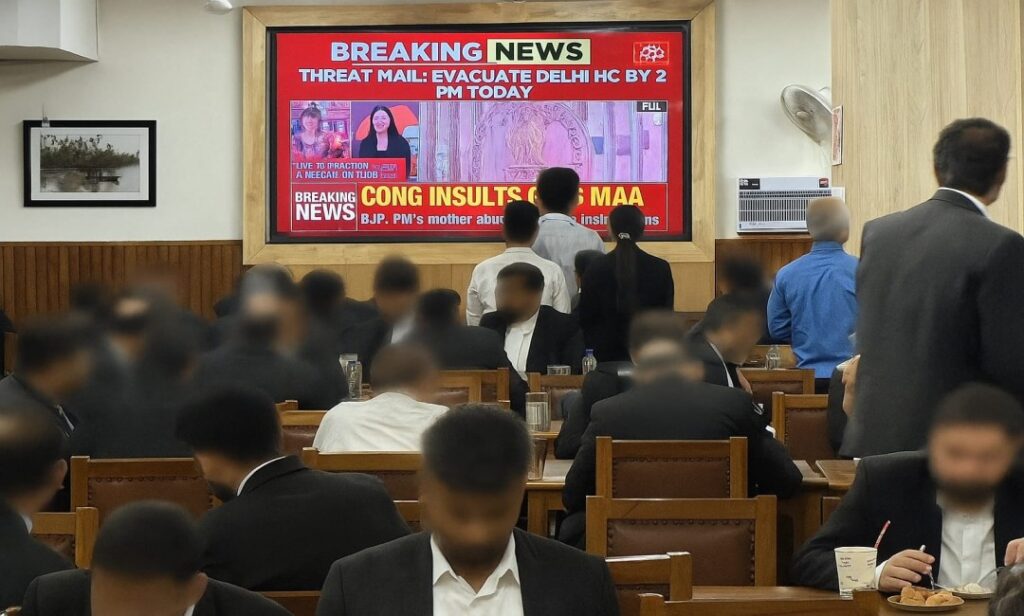Amit Agarwal
Yesterday, a bomb threat rattled the high courts of Delhi and Bombay, and a disquieting image from a social media post went viral. It captured a scene from the Delhi High Court’s advocates’ canteen: on a large television screen, a news channel’s “BREAKING NEWS” banner flashed with updates on the bomb threat. Yet, in the foreground, a large group of advocates appeared to be unaware of the situation as they had lunch, with no visible safety signals to make them aware. This stark and unsettling contrast between a reported security crisis and the casual demeanor of those on the ground has raised a crucial and overdue question about India’s preparedness for such threats.
A Nationwide Pattern of Threats
The incident was not isolated. The Delhi High Court received an email warning of a bomb on its premises, prompting a swift response from the Delhi Police, who, along with fire services and a bomb disposal squad, initiated an extensive search operation. Later the same day, a similar email threat was sent to the Bombay High Court, which also led to a massive security deployment and the evacuation of the building. Both threats were ultimately declared hoaxes, but the repeated nature of these incidents points to a pattern that cannot be ignored.
The Peril of “Hoax Fatigue”
The image from the Delhi High Court’s canteen symbolizes what security experts often call “hoax fatigue.” When false alarms become common, a dangerous sense of indifference can set in, leading people to believe that a threat is likely to be fake. This collective shrug, while understandable after a series of false alarms, is precisely the vulnerability that could be exploited in the event of a genuine attack. In a high-security area like a court, where a real threat could cause immense loss of life and disrupt the justice system, such complacency is unacceptable.
The Urgent Need for a Proactive Plan
The current situation is not just a failure of individual awareness but points to a systemic flaw in emergency preparedness. It is an urgent call for both the government and the judiciary to take proactive steps:
Mandatory and Realistic Mock Drills: The current protocol for bomb threats and evacuations needs to be put to the test. All courts across India should conduct unannounced, realistic mock drills on a quarterly basis. These drills should involve every person on the premises—from judges and senior lawyers to clerks and visitors—ensuring that everyone knows the designated evacuation routes and safe assembly points.
Establish a Standardized Protocol: A clear, nationwide protocol for handling security threats should be developed in collaboration with state and central security agencies. This includes a robust communication system to disseminate verified information and prevent misinformation, as well as a pre-planned chain of command during a crisis.
Invest in Continuous Training: Security is a continuous process, not a one-time event. Law enforcement agencies and court security personnel must receive regular training to identify and respond to threats effectively. Equally important is the training of court staff and members of the bar to ensure they act responsibly and assist in an orderly evacuation.
A Final Wake-Up Call
The calm scene in the Delhi High Court canteen, while perhaps a sign of resilience, should be viewed as a symptom of a deeper problem. The judiciary is a pillar of our democracy, and its security must be beyond question. The bomb hoaxes in Delhi and Bombay are not just news events; they are a clear and present warning. It is high time for all of India’s courts to move from a culture of hopeful indifference to one of meticulous and unwavering security preparedness. The safety of everyone who seeks justice within these hallowed halls depends on it.
Instagram: Click here
LinkedIn: Click here

